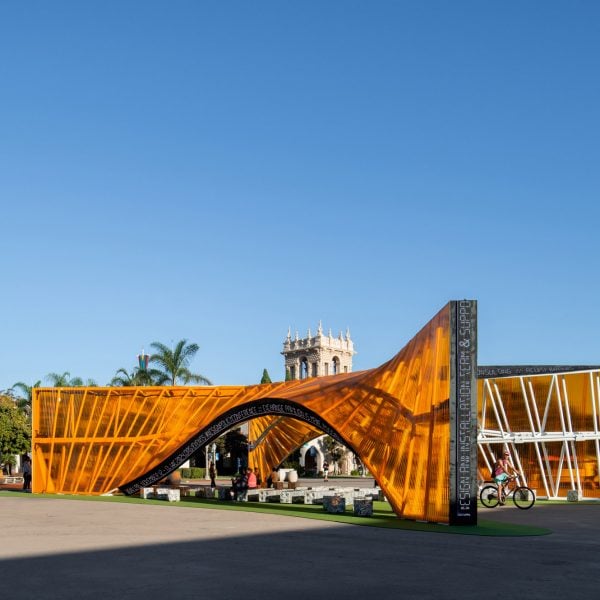Local design studio Heleo and Tijuana artist Daniel Ruanova have created a pavilion in San Diego meant to symbolise a twisting together of the walls on the US-Mexico border to form a space for gathering.
Called Exchange Pavilion, it was erected in Balboa Park as part of the World Design Capital activations, which celebrate art and design in San Diego and Tijuana – the first time the international NGO World Design Organization has selected joint cities for the designation.
Heleo took the international, cross-border designation and used that as the driving principle for the pavilion in the plaza.
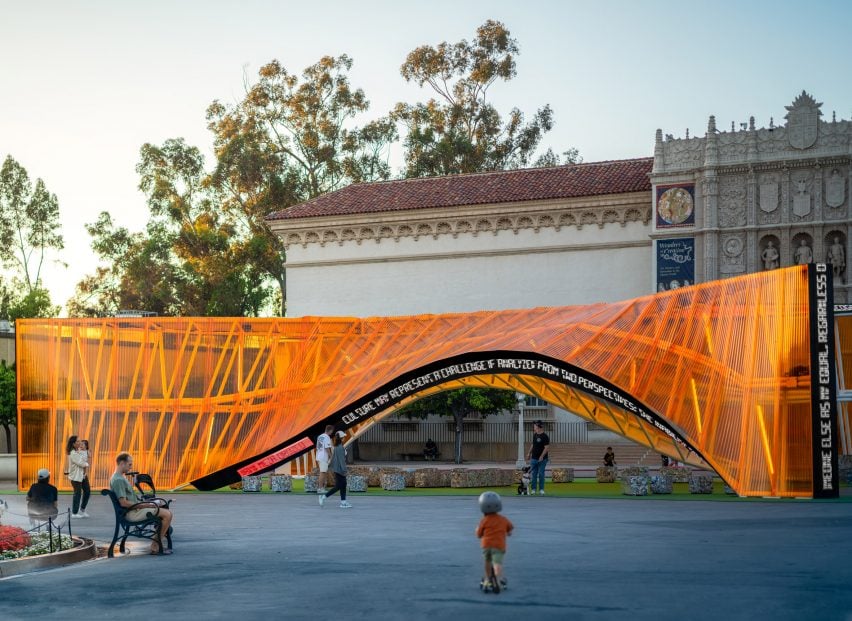
The pavilion is 16 feet tall (4.9 metres) at its tallest point and consists of a light gauge steel structure covered with orange polycarbonate panels that twist to form the walls and ceilings of the structure. Most of it was fabricated in Tijuana and shipped across the border.
Heleo co-founder Carlos E Hernandez said that the studio and Ruanova wanted to use “democratic” materials in the construction.
He said that the two materials that form the structure, steel and corrugated plastic, were meant to represent the two border walls and that the no man’s land between the borders was reconceptualised as a place for gathering in the pavilion.
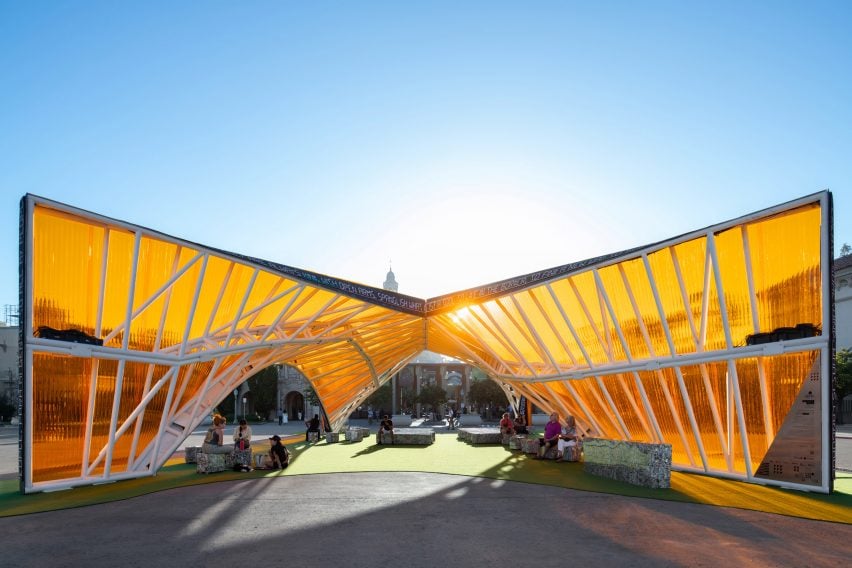
“It was a very simple gesture, taking these two walls that are bent together, and the corrugation on the material comes from the border wall that exists now, which is corrugated metal.”
And when you look at it with the polycarbonate, it gives you this kind of low-tech stained glass effect.
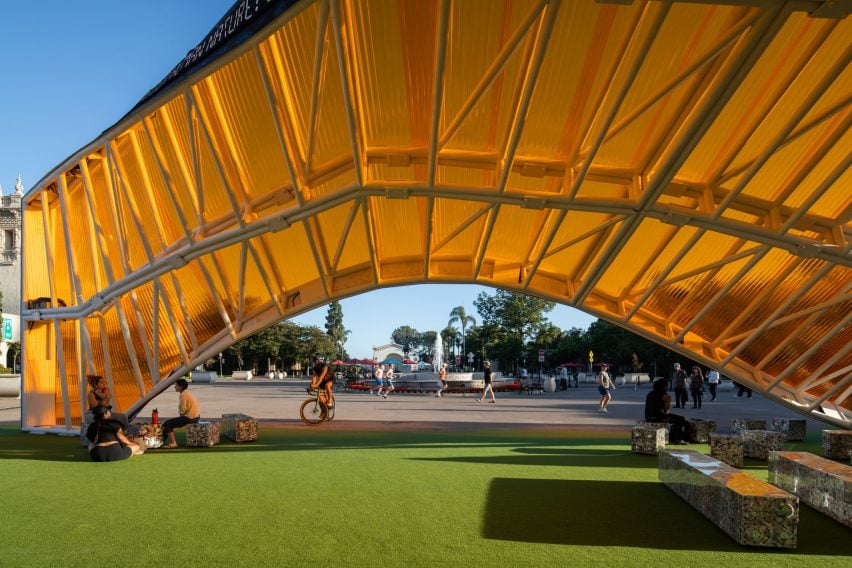
The interior of the structure is meant to represent the “no man’s land” between the border walls, but as a space for gathering instead of exclusion, while not losing site of the complex relationship between the two cities.
“The border water is hideous but the only thing that’s monumental,” said Ruanova. “We shouldn’t distract ourselves to say there is no wall. It is too cultures moving towards each other.”
When the sun shines through the polycarbonate, the effect is like a “low-tech cathedral” according to Hernandez.
Running along the edge of the structure is an LED ticker tape that flashes poetry. The studio said that it references the stock exchange, furthering the metaphors of exchange worked into the project.
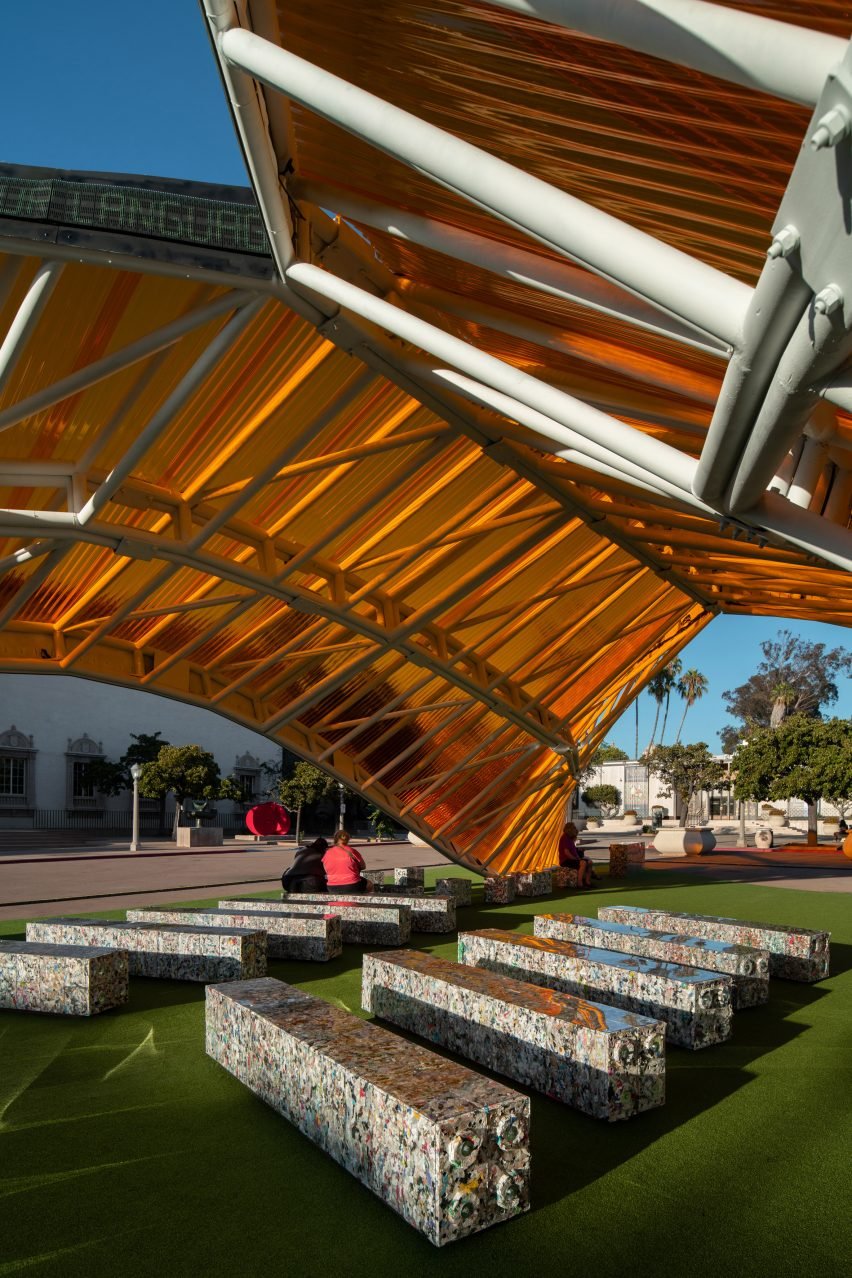
The floor underneath the structure is covered in artificial grass and seating elements made of California manufacturer Byblock’s recycled-plastic masonry units are spread around.
At night programmed LED lighting produces colourful light that plays off the adjacent Spanish Revival-style buildings in the plaza.
According to Heleo, the pavilion is meant to be “hopeful architecture” and gesture towards the future of design in San Diego and continued cross-border collaboration.
“It’s a hopeful kind of architecture,” Heleo co-founder Barbara Leon told Dezeen. “It’s something that really pushes the boundaries and we haven’t seen anything like that in San Diego.”
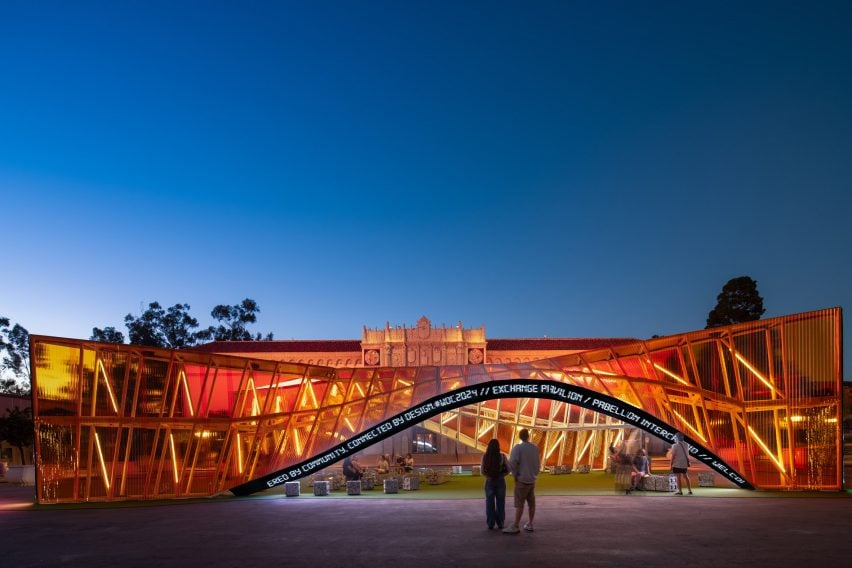
The pavilion will remain up until November, and the team hopes that it can be also be erected in Tijuana after its run in Balboa Park.
The World Design Organization selects and empowers local chapters called World Design Capitals to create pavilions and programming that highlight the design scenes in cities around the world.
“The Exchange Pavilion invites us to connect with people, provoking dialogue, creativity, human connection, and the exchange of our collective experiences,” said World Design Capital 2024 chair Mai Nguyen.
Events, talks and gatherings will be held in San Diego and Tijuana for the remainder of the year. Previous cities to receive the designation include Valencia, Spain, which created a pavilion with ceramic-like “skin”.
The photography is by Paco Alvarez.
The Exchange Pavilion for World Design Capital San Diego Tijuana lasts from 15 August to 17 November 2024. For more events, talks and showcases in architecture and design visit Dezeen Events Guide.

